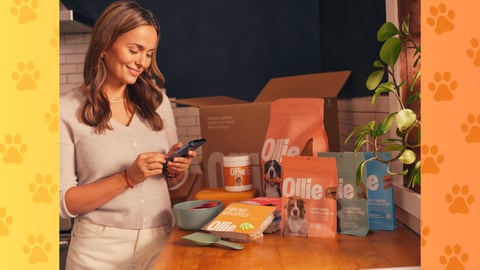Barefoot Footwear Brand Xero Shoes Sprints Toward DTC With E-commerce Launch
Xero Shoes, a barefoot footwear brand co-founded by husband-and-wife duo Steven Sashen and Lena Phoenix, got its start in November of 2009. It didn’t take long for the couple to realize that a wide audience would relate to Sashen’s vision for barefoot-style running that eliminated injuries and prioritized comfort — but that reaching this population required more than the traditional CG-retailer partnership. They needed to go straight to the source.
CEO Sashen tells CGT that he recognized that if the brand didn’t sell directly online to consumers, they would have no relationship with them.
“That is why it was really important to start selling online first and fast,” says Sashen. “We needed the ability to modify the site to create a unique customer experience and meet business needs.”
This approach, says Sashen, allows the brand to reach a global audience while being local.
“Investors will often look at an online business and be critical because that business has not proven their model in brick-and-mortar retail, because they don't realize that selling something sight-unseen (or unworn, in our case), is actually better proof of viability,” he adds.
Sashen believes in the success of a DTC model. While the company does sell via retail as well, selling direct means the brand is less impacted by the behavior of its retail partners. Amid a volatile environment — with COVID and tradewars driving constant changes — the DTC strategy allows Xero Shoes to be more flexible.
“For example, one of our largest retail customers canceled a large order during COVID,” says Sashen. “That could have put Xero out of business, but because we sell directly to consumers, we redirected that product and did very well.”
Achieving DTC Success
In 2012, the company pivoted to an open source website solution that would allow greater code customization and ownership of data. WooCommerce helped the brand create a custom e-commerce experience that runs on WordPress.
By using a simple plugin rather than having to build out an extensive set of features, Xero Shoes has been able to run everything on its own server — with the web application and database server separated to maximize performance and scalability.
Since then, the company has kicked off a comprehensive e-commerce strategy, recently launching an online wholesale business and a separate site to sell, ship, and service the European shoe market.
“The open nature of WooCommerce allowed us to implement many integrations to extend the capabilities of WooCommerce and, by nature, e-commerce,” says Sashen, who recognized that, often, e-commerce businesses are vulnerable if they remain small, but the technology solution has allowed Xero Shoes to move past that phase.
There’s ROI in DTC
Xero Shoes is continuing to build its e-commerce tech stack, now looking to integrate a CRM application into the plugin to enable a 360-degree view of the customer to provide better support and a higher-converting experience.
The brand is comfortable expanding its capabilities as the technology has allowed Xero Shoes to grow about 50% year-over-year, achieving an estimated $50 million in sales in 2022.
The partnership has also helped the company avoid roadblocks to customer acquisition. While many e-commerce sites require guest checkout, or force first-time customers to create a login to checkout, Xero shoes is able to simply create accounts on the fly for new customers. Additionally, returning customers can automatically link their order based on email address, streamlining a previously burdensome process.
Test, Test, and Re-Test
To continue being a differentiator in the marketplace, however, the brand recognized that constant testing is important. There’s a need to really understand customer behavior on an e-commerce site, and that means always learning and adapting.
“There's no one size fits all. You have to explore and find what works for your business,” says Sashen. “You need to learn and understand the customer experience and the associated data, and then test changing elements of your site to address friction and improve conversion.”
While there are tools available to automate this process, Sashen warns that machine learning, which is catching the eye of CG brands and retailers all over the globe, often requires significant time and funding.
“It may not deliver the results you need in a timeframe that works for your business,” he adds. “In short, it's best to really study the needs of your specific business and your customers to determine what type of testing will work well for you.”
Did you know? DTC is shifting beyond online shopping. Learn more at this year’s Consumer Goods Sales & Marketing Summit, happening in New York City on October 26-28.







